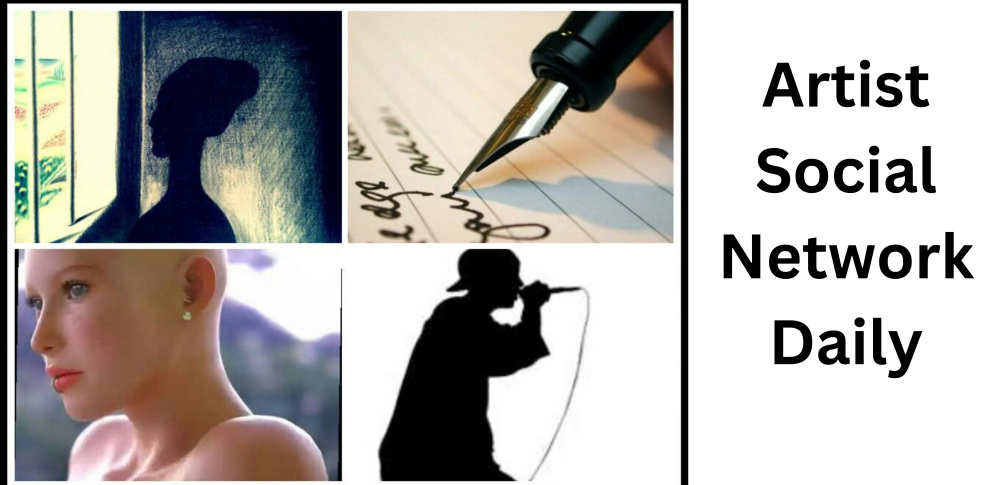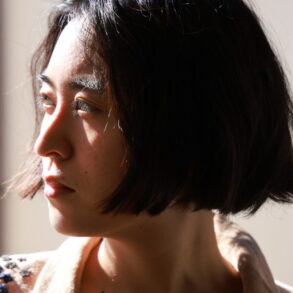As models walked down the ramp for the “Dior Haute Couture SS25” show in Paris on January 27, 2025, their clothes, embellished with embroidery, beadwork, and feathers, dramatically complemented the opulent tropical art backdrop created by the Barcelona-based, Mumbai-born visual artist Rithika Merchant. Her installation “The Flowers We Grew” was commissioned by Maria Grazia Chiuri as part of the scenography for “Dior Haute Couture SS25”. Composed of nine paintings, which were transformed into large-scale textile panels by the Chanakya School of Craft (a non-profit school dedicated to “craft, culture and creating new autonomy for women”), the installation is now on display at Musée Rodin in Paris.
It is a vibrant piece of work with bird-headed human figures gorging on mangoes, a depiction of Merchant’s grandmother Revati Amma’s milk cooperative for the women of her village, bird figures in a lotus pond, and more. Inspired by the stories Merchant heard from her maternal family in Kerala, the installation has the verdant lushness of the southern State. All her artworks are drawn from nature and created using a combination of watercolours and cut paper elements, which can be traced back to 17th century botanical prints and folk art.
Merchant’s website says that her work “explores comparative mythology, as well as science and speculative fiction, featuring creatures and symbolism that are part of her personal visual vocabulary”. She was honoured with the Vogue India Young Achiever of the Year Award in 2018. Later, she won the Sovereign Asian Art Prize 2021-Vogue Hong Kong Women’s Art Prize for her painting Saudade.

Models stand in front of the “The Flowers We Grew” installation at “Dior haute couture SS25”.
| Photo Credit:
LAURA SCIACOVELLI
In an interview with Frontline, Merchant spoke about her collaborations with French fashion houses, the personal history that fuels her work, and her artistic training. Excerpts.
How did the collaboration with Dior happen?
Karishma Swali, creative director of Chanakya International [a textile and embroidery house headquartered in Byculla, Mumbai] and the Chanakya School of Craft, saw my work and introduced it to Dior’s creative director, Maria Grazia Chiuri.
I met both Karishma and Maria for the first time in Mumbai in 2023, when the team came to India for a show. When they told me about the Dior project and I went through the work they do at Chanakya, I was immediately on board. The collaboration blossomed from there.
There was no brief: I went about it the same way as I do with my usual art practice. I focussed on telling a story by using my own world-building techniques. This was more of an artistic project than a fashion collaboration as it didn’t have anything to do with the Dior collection itself.
Also Read | A new dawn
You had earlier done a collaboration with the French fashion house Chloé.
My collaborations with Chloé happened totally by chance. Natacha Ramsay-Levi, who was then the creative director of Chloé, came across my work online and liked it. She felt it would fit what she had in mind for her hand-painted dresses [inspired by the designer Karl Lagerfeld].
They googled my name, saw that I was in Barcelona, and sent me an email asking if I wanted to collaborate with them. It was totally out of the blue for me and a very nice surprise. In a couple of weeks, I had been briefed and was in their studio in Paris to work with them on the dresses. l spent about two weeks with Natacha and the rest of the team to place my drawings on the garments.
We adapted the prints to fit each garment uniquely. The prints I worked on for the collection were filled with lots of esoteric and spiritual symbols and botanical imagery; they were much more graphic and bolder than the work I typically make.

Craftspeople at the making of the scenography.
| Photo Credit:
Prarthna Singh, Rithika Merchant
What stories did “The Flowers We Grew” come from? How was the process from the sketch to the final embroidery work?
The “Flowers We Grew” series channels the energy of my female ancestors. My mother’s family is from Kerala, and I come from a long line of wild, fierce and powerful matriarchs. I turned to the ancestral stories that have been passed down to me through this line of matriarchs. Although the work is created mining my personal history, it speaks to a collective ancestral feminine energy that many women can relate to. I use the three walls [of the catwalk] to tell a story, through nine paintings.
The central wall, from where the models walked down, represented the present. On either side, the long walls represented the past and the future respectively. The wall representing the past consisted of four works referencing the ancestral stories. They featured plants, trees, and flowers found in Kerala, such as jackfruit, palm trees, pepper vines, banana trees, coffee bushes and thunder lilies. The wall representing the future consisted of four works illustrating my vision of a future led by women harnessing the powerful female energy and joy.
We all stand on the shoulders of our ancestors and get our powers from them. I am interested in exploring how we can transform and harness this divine feminine ancestral power and wisdom going forward. The seeds we plant in the past grow into the flowers of the present. Meeting Karishma and working with Chanakya has been a highlight for me—being in conversation with them and seeing how they interpret my work, especially the watercolour elements with embroidery, have been wonderful.
I am lucky to live quite close to the ateliers in Mumbai. I was able to check on the progress on the panels. I could not have had a better experience. Being able to see up close the way the master embroiderers work was incredible.
““I knew from a young age that I wanted to be an artist, and so when the time came for me to go to college, I was sure that the only option for me was art school.””Rithika Merchant
How did Dior work with you on the project?
Since this was an artistic project, I was given the freedom to realise my vision without any constraints. Maria and Christian Dior couture’s chief communication and image officer, Olivier Bialobos, allowed me the space to explore my ideas fully.
Maria is a champion of the arts. She gives the artist she works with the opportunity to realise a monumental project while staying true to their vision. I’m grateful to her and to Dior for supporting this project and letting my creative vision fly free. It has been surreal to see the works translated on such a scale into an immersive installation.

One of the panels from “The Flowers We Grew”.
| Photo Credit:
ADRIEN DIRAND, RITHIKA MERCHANT, CHANAKYA SCHOOL OF CRAFT
Tell us about the fantasy elements and the almost hieroglyphic look of your art.
I would describe my style as semi-surreal, intricately detailed, visual storytelling. I am drawn to works instilled with symbolism that also convey strong narratives. Kalamkari designs, 17th century botanical prints, and religious or folk iconography fuel my search. A lot of my time is spent reading and researching topics that interest me: it helps me build my own lexicon of symbols and creatures. I also incorporate elements of map-making and cartography into some works. All these influences merge in a deeply personal and intuitive way, expressing a particular feeling or concept.
““The combination of having grown up in India, studying in the US, travelling extensively, and having strong ties with Europe is the reason behind my interest in the links between cultures.””Rithika Merchant
Tell us about your Kerala link. And also about the other half of your family.
I was born and raised in Mumbai. My matriarchal line comes from Kerala. I still have family and an ancestral home in Kerala. On my father’s side, I’m half Mangalorean and half Gujarati.
Also Read | The fine art of a coarse India
What project are you working on now? You studied at Parsons, which is one of the top art schools in the world. How did you hone your skills as a student there?
I show my new body of work at my solo exhibition at TARQ, Mumbai, this April. I graduated with a bachelor’s of Fine Arts from Parsons School of Design in New York in 2018. I knew from a young age that I wanted to be an artist, and so when the time came for me to go to college, I was sure that the only option for me was art school.
I applied to a few different schools and eventually settled on Parsons as their programme resonated with me the most. The experience there built the foundations for my current practice. The fine arts programme at Parsons favours the conceptual aspect of art-making over the technical.
Studying art history along with other elective courses was an important requirement. This promoted my growth in various areas because the ideas and the process of making art are much more important to me than having the perfect painting. I was able to explore and experiment with many different mediums before I came to the work I do now. We were also taught a lot about the practical side of working as an artist, and I took those teachings to heart.
The combination of having grown up in India, studying in the US, travelling extensively, and having strong ties with Europe is the reason behind my interest in the links between cultures. This drives my inclination towards regular reading and research, and they all come together in creating my visual language.
Anna Mathews, a Kochi-based journalist, writes on politics, social issues and culture, and has broken stories on the Malayalam film industry.
This post was originally published on this site be sure to check out more of their content




CONTRIBUTE YOUR COMMENTS